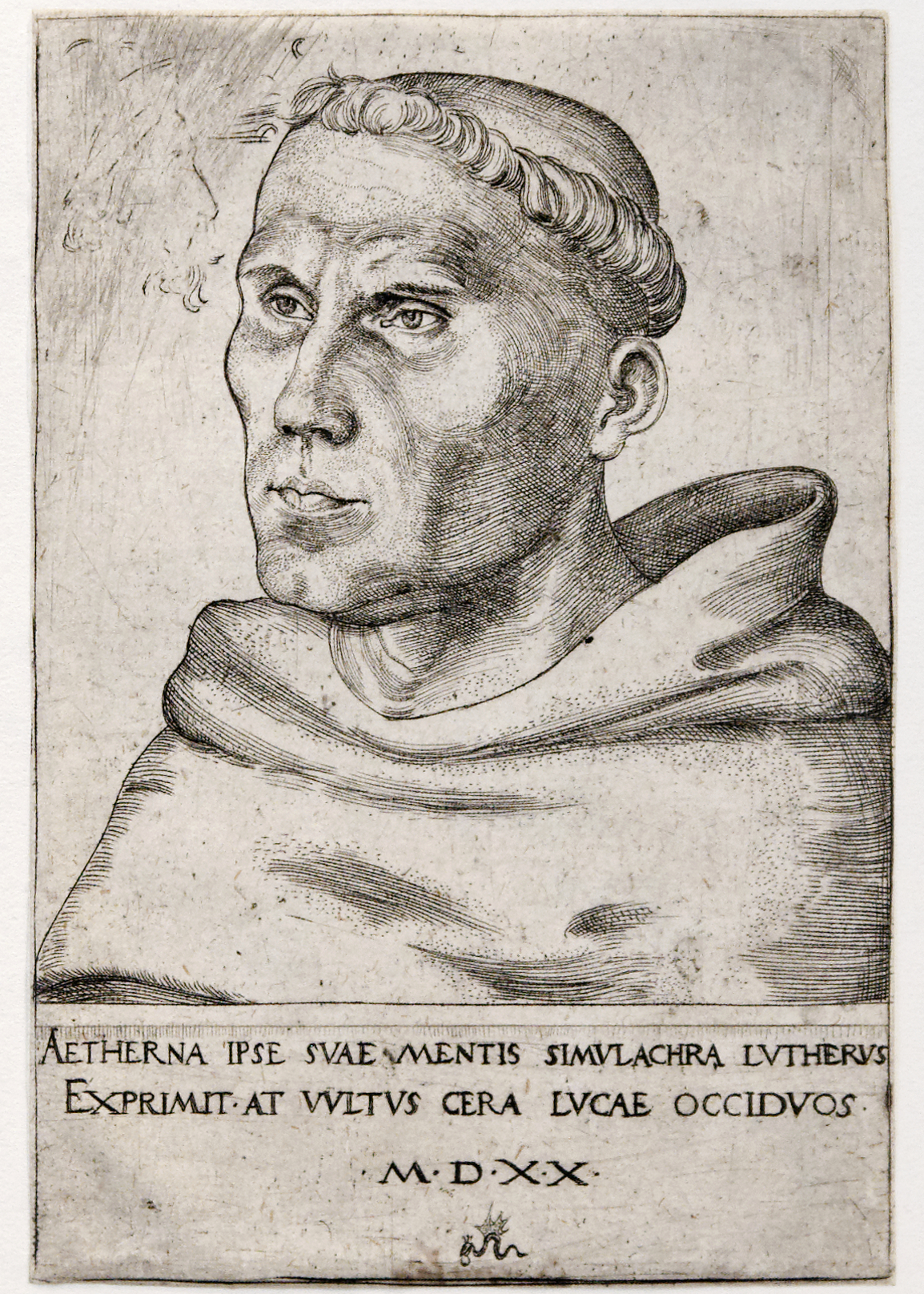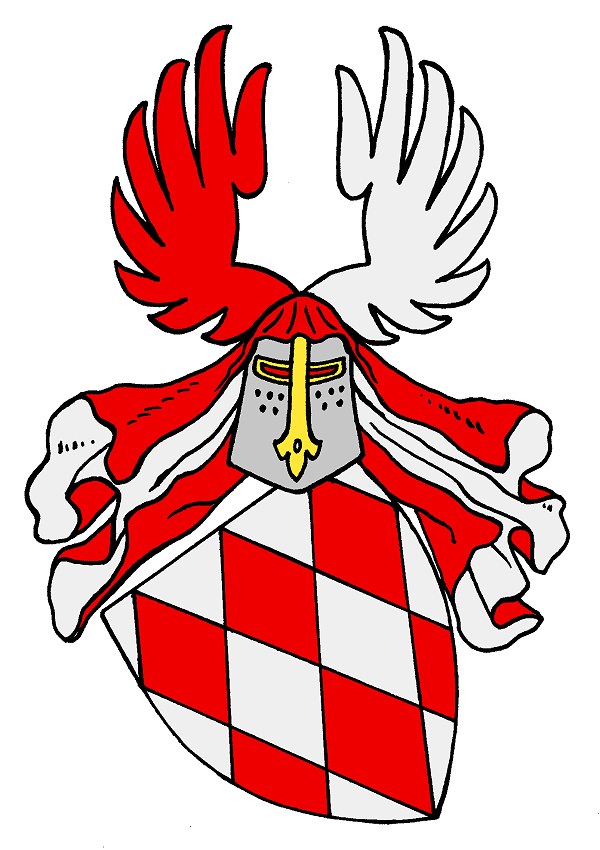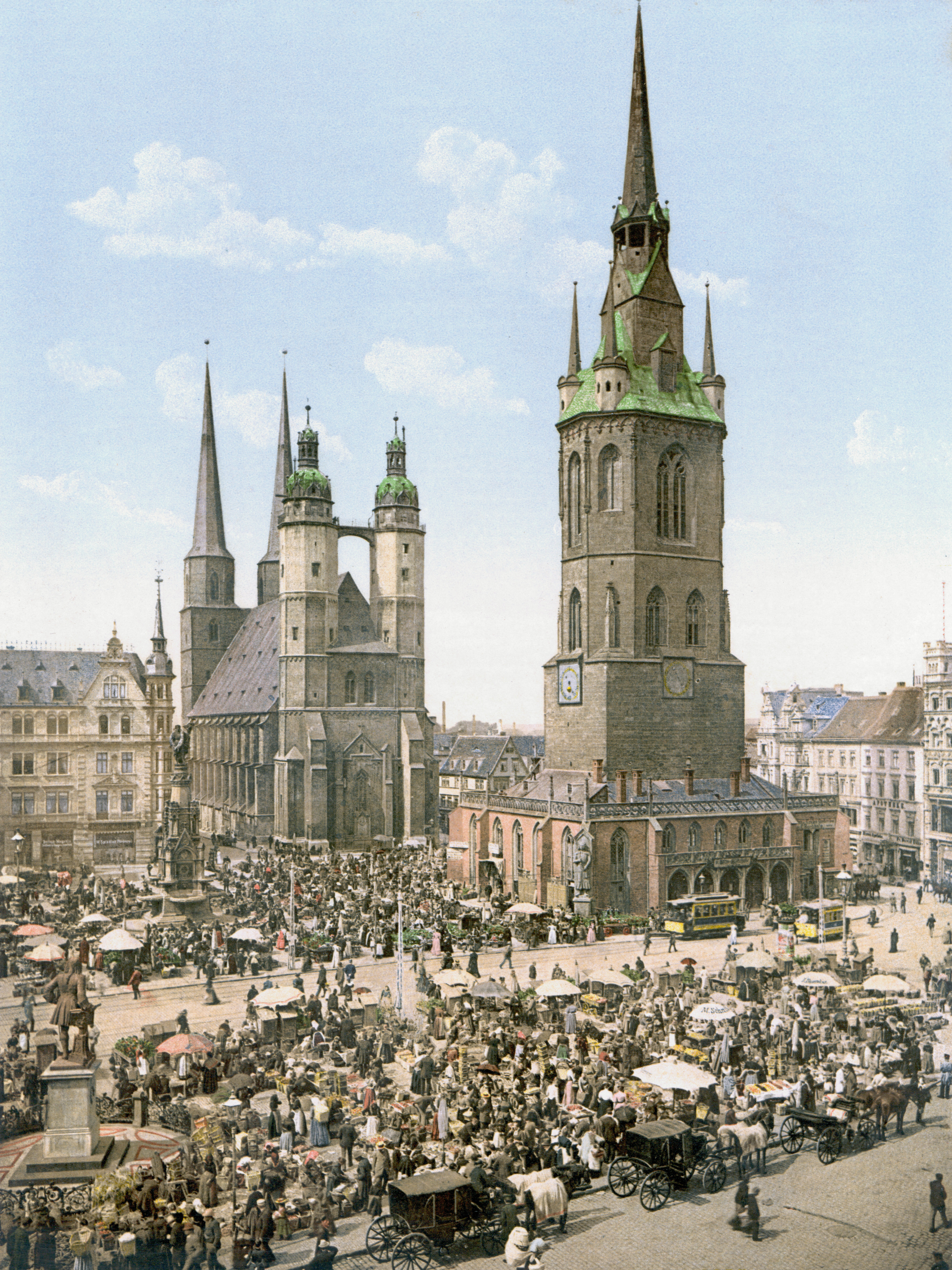|
Martin Luther's Death House
Martin Luther's Death House () is a historic building in Eisleben, Saxony-Anhalt Germany, long regarded as the place where the influential theologian Martin Luther died on 18 February 1546. Along with Martin Luther's Birth House in Eisleben and other sites associated with Martin Luther in Wittenberg, the building was inscribed on the UNESCO World Heritage List in 1996. It is now a museum. History Luther travelled on 23 January 1546 from Halle to Eisleben on a mission to solve an inheritance dispute in the House of Mansfeld. This mediation was protracted and in the meantime Luther was tormented by cramps in his chest. Luther anticipated his death many days beforehand because he was increasingly suffering many heart attacks. By 17 February 1546 the inheritance dispute had finally been resolved and at dinner that day Luther commented he would finally lie down to sleep in his coffin and allow the worms to have a good meal. The pain in his chest continued to worsen and many medi ... [...More Info...] [...Related Items...] OR: [Wikipedia] [Google] [Baidu] |
Eisleben
Eisleben is a town in Saxony-Anhalt, Germany. It is famous as both the hometown of the influential theologian Martin Luther and the place where he died; hence, its official name is Lutherstadt Eisleben. First mentioned in the late 10th century, Eisleben is divided into the old town of Altstadt, and new town of Neustadt. Neustadt was created for Eisleben's miners in the 14th century. As of 2020, Eisleben had a population of 22,668. It lies on the Halle–Kassel railway. History Eisleben was first mentioned in 997 as a market called Islebia, and in 1180 as a town. The counts of Mansfeld governed the area until the 18th century. During the Protestant Reformation, Count Hoyer VI of Mansfeld-Vorderort (1477–1540) remained loyal to his Catholic faith, but the family's Mittelort and Hinterort branches sided with Martin Luther. The German Peasants' War devastated the area, about a century before the Thirty Years War. Count Albert VII of Mansfeld-Hinterort (1480–1560) signed th ... [...More Info...] [...Related Items...] OR: [Wikipedia] [Google] [Baidu] |
House Of Mansfeld
The House of Mansfeld was a German Prince, German princely house, which took its name from the town of Mansfeld in the present-day state of Saxony-Anhalt. Mansfelds were archbishops, generals, supporters as well as opponents of Martin Luther, and Habsburg monarchy, Habsburg administrators. History Upon the revolt instigated by the House of Wettin, Wettin margrave Dedi I, Margrave of the Saxon Ostmark, Dedi I in 1069, Emperor Henry IV, Holy Roman Emperor, Henry IV appointed the loyal House of Mansfeld counts (''Grafen'') in the Saxon Hassegau at Eisleben. The family progenitor, Count Hoyer I of Mansfeld, also known as Hoyer the Great, was a field marshal in the service of Emperor Henry V, Holy Roman Emperor, Henry V. He was killed at the Battle of Welfesholz on 11 February 1115, fighting the rebellious Saxon forces under Count Lothair III, Holy Roman Emperor, Lothair of Supplinburg. The Mansfelds held extended fiefs both in the Archbishopric of Magdeburg and the Bishopric of Halbe ... [...More Info...] [...Related Items...] OR: [Wikipedia] [Google] [Baidu] |
Historic House Museums In Germany
History is the systematic study of the past, focusing primarily on the human past. As an academic discipline, it analyses and interprets evidence to construct narratives about what happened and explain why it happened. Some theorists categorize history as a social science, while others see it as part of the humanities or consider it a hybrid discipline. Similar debates surround the purpose of history—for example, whether its main aim is theoretical, to uncover the truth, or practical, to learn lessons from the past. In a more general sense, the term ''history'' refers not to an academic field but to the past itself, times in the past, or to individual texts about the past. Historical research relies on primary and secondary sources to reconstruct past events and validate interpretations. Source criticism is used to evaluate these sources, assessing their authenticity, content, and reliability. Historians strive to integrate the perspectives of several sources to develop a ... [...More Info...] [...Related Items...] OR: [Wikipedia] [Google] [Baidu] |
Biographical Museums In Germany
A biography, or simply bio, is a detailed description of a person's life. It involves more than just basic facts like education, work, relationships, and death; it portrays a person's experience of these life events. Unlike a profile or curriculum vitae (résumé), a biography presents a subject's life story, highlighting various aspects of their life, including intimate details of experience, and may include an analysis of the subject's personality. Biographical works are usually non-fiction, but fiction can also be used to portray a person's life. One in-depth form of biographical coverage is called legacy writing. Works in diverse media, from literature to film, form the genre known as biography. An authorized biography is written with the permission, cooperation, and at times, participation of a subject or a subject's heirs. An unauthorized biography is one written without such permission or participation. An autobiography is written by the person themselves, sometimes wit ... [...More Info...] [...Related Items...] OR: [Wikipedia] [Google] [Baidu] |
Reformation
The Reformation, also known as the Protestant Reformation or the European Reformation, was a time of major Theology, theological movement in Western Christianity in 16th-century Europe that posed a religious and political challenge to the papacy and the authority of the Catholic Church. Towards the end of the Renaissance, the Reformation marked the beginning of Protestantism. It is considered one of the events that signified the end of the Middle Ages and the beginning of the early modern period in Europe. The Reformation is usually dated from Martin Luther's publication of the ''Ninety-five Theses'' in 1517, which gave birth to Lutheranism. Prior to Martin Luther and other Protestant Reformers, there were Proto-Protestantism, earlier reform movements within Western Christianity. The end of the Reformation era is disputed among modern scholars. In general, the Reformers argued that justification (theology), justification was sola fide, based on faith in Jesus alone and n ... [...More Info...] [...Related Items...] OR: [Wikipedia] [Google] [Baidu] |
Cardiac Infarct
A myocardial infarction (MI), commonly known as a heart attack, occurs when blood flow decreases or stops in one of the coronary arteries of the heart, causing infarction (tissue death) to the heart muscle. The most common symptom is retrosternal chest pain or discomfort that classically radiates to the left shoulder, arm, or jaw. The pain may occasionally feel like heartburn. This is the dangerous type of acute coronary syndrome. Other symptoms may include shortness of breath, nausea, feeling faint, a cold sweat, feeling tired, and decreased level of consciousness. About 30% of people have atypical symptoms. Women more often present without chest pain and instead have neck pain, arm pain or feel tired. Among those over 75 years old, about 5% have had an MI with little or no history of symptoms. An MI may cause heart failure, an irregular heartbeat, cardiogenic shock or cardiac arrest. Most MIs occur due to coronary artery disease. Risk factors include high blood press ... [...More Info...] [...Related Items...] OR: [Wikipedia] [Google] [Baidu] |
Justus Jonas
Justus Jonas, the Elder (5 June 1493 – 9 October 1555), or simply Justus Jonas, was a German Lutheran theologian and reformer. He was a Jurist, Professor and Hymn writer. He is best known for his translations of the writings of Martin Luther and Philipp Melanchthon. He accompanied Martin Luther in his final moments. Life and church Jonas was born at Nordhausen in present-day Thuringia where he was the son of the burgermeister. His birth name was Jodokus (Jobst) Koch, which he changed according to the common custom of German scholars in the sixteenth century, when at the University of Erfurt. He entered that university in 1506, studied law and the humanities, and became Master of Arts in 1510. In 1511, he went to University of Wittenberg, where he took his bachelor's degree in law. He returned to Erfurt in Thuringia during 1514 or 1515 was ordained priest. In 1518, he was appointed Canon of St. Severus Church (''Severikirche'') in Erfurt which was a collegiate church. In 151 ... [...More Info...] [...Related Items...] OR: [Wikipedia] [Google] [Baidu] |
Paul Luther
Paul Luther (19 November 1533 – 8 March 1593) was a German physician, medical chemist, and alchemist. He was the third son of the German Protestant Reformer Martin Luther and was successively physician to John Frederick II, Duke of Saxony; Joachim II Hector, Elector of Brandenburg; Augustus, Elector of Saxony and his successor Christian I, Elector of Saxony. He taught alchemy to Anne of Denmark. Early life Born at Wittenberg, the third son of Martin Luther by his marriage to Katharina von Bora, Luther was named after Saint Paul the Apostle and proved such an energetic child that his father said of him, "He is destined to fight against the Turks." The boy's education began with the study of Greek and Latin under Philip Melanchthon and Veit Winsheim.John G. Morris, ''Catharine de Bora, or Social and Domestic Scenes in the Home of Luther'', p. 112 In 1546, when Luther was thirteen, his father died, leaving the family in straitened circumstances without Luther's salarie ... [...More Info...] [...Related Items...] OR: [Wikipedia] [Google] [Baidu] |
Die Zeit
(, ) is a German national weekly newspaper published in Hamburg in Germany. The newspaper is generally considered to be among the German newspapers of record and is known for its long and extensive articles. History The first edition of was first published in Hamburg on 21 February 1946. The founding publishers were Gerd Bucerius, Lovis H. Lorenz, Richard Tüngel and Ewald Schmidt di Simoni. Marion Gräfin Dönhoff joined as an editor in March 1946. She became publisher of from 1972 until her death in 2002. In 1983 she was joined by former Chancellor of Germany (1949–), German chancellor Helmut Schmidt. Later Josef Joffe and former German federal secretary of culture Michael Naumann joined them as well. The paper's publishing house, Zeitverlag Gerd Bucerius in Hamburg, is owned by the Georg von Holtzbrinck Publishing Group and Dieter von Holtzbrinck, Dieter von Holtzbrinck Media. The paper is published weekly on Thursdays. As of 2018, has additional offices in Brussels, ... [...More Info...] [...Related Items...] OR: [Wikipedia] [Google] [Baidu] |
Halle (Saale)
Halle (Saale), or simply Halle (), is the second largest city of the States of Germany, German state of Saxony-Anhalt. It is the sixth-most populous city in the area of former East Germany after (East Berlin, East) Berlin, Leipzig, Dresden, Chemnitz and Magdeburg as well as the List of cities in Germany by population, 31st-largest city of Germany. With around 226,000 inhabitants, it is less populous than the state capital, Magdeburg. With Leipzig, the largest city of Saxony, Halle forms the polycentric metropolitan area, polycentric Leipzig-Halle conurbation. Leipzig/Halle Airport, Leipzig/Halle International Airport lies between the two cities, in Schkeuditz. The Leipzig-Halle conurbation is at the heart of the larger Central German Metropolitan Region. Halle has been known by many names throughout its history. From the 15th to the 17th century: ''Hall in Sachsen''. From then until the beginning of the 20th century, the name Halle an der Saale was used, and still remains a more ... [...More Info...] [...Related Items...] OR: [Wikipedia] [Google] [Baidu] |
Mansfeld-Südharz
Mansfeld-Südharz is a district in Saxony-Anhalt, Germany. Its area is . History The district was established by merging the former districts of Sangerhausen and Mansfelder Land as part of the reform of 2007. In the German parliament, the Bundestag The Bundestag (, "Federal Diet (assembly), Diet") is the lower house of the Germany, German Federalism in Germany, federal parliament. It is the only constitutional body of the federation directly elected by the German people. The Bundestag wa ..., the area forms part of the Mansfeld electoral district. Towns and municipalities The district Mansfeld-Südharz consists of the following subdivisions: References {{MansfeldSüdharz-geo-stub ... [...More Info...] [...Related Items...] OR: [Wikipedia] [Google] [Baidu] |
World Heritage List
World Heritage Sites are landmarks and areas with legal protection under an international treaty administered by UNESCO for having cultural, historical, or scientific significance. The sites are judged to contain "cultural and natural heritage around the world considered to be of outstanding value to humanity". To be selected, a World Heritage Site is nominated by its host country and determined by the UNESCO's World Heritage Committee to be a unique landmark which is geographically and historically identifiable, having a special cultural or physical significance, and to be under a sufficient system of legal protection. World Heritage Sites might be ancient ruins or historical structures, buildings, cities, deserts, forests, islands, lakes, monuments, mountains or wilderness areas, and others. A World Heritage Site may signify a remarkable accomplishment of humankind and serve as evidence of humanity's intellectual history on the planet, or it might be a place of great natu ... [...More Info...] [...Related Items...] OR: [Wikipedia] [Google] [Baidu] |








